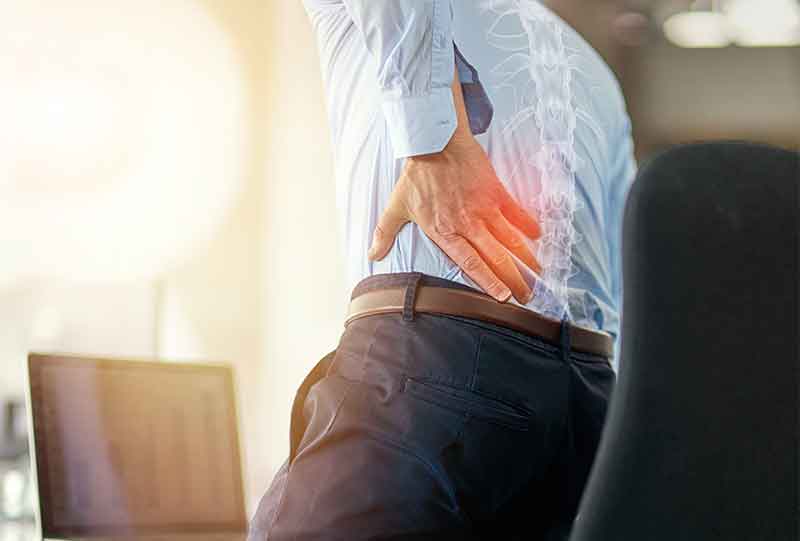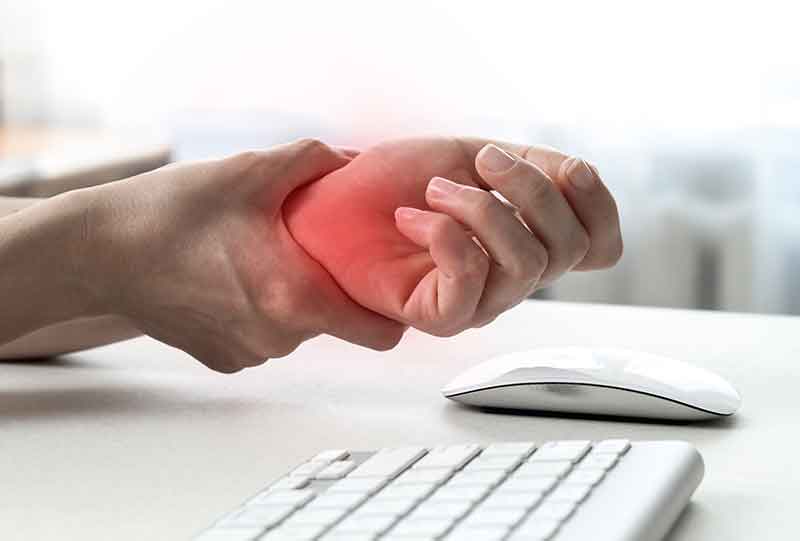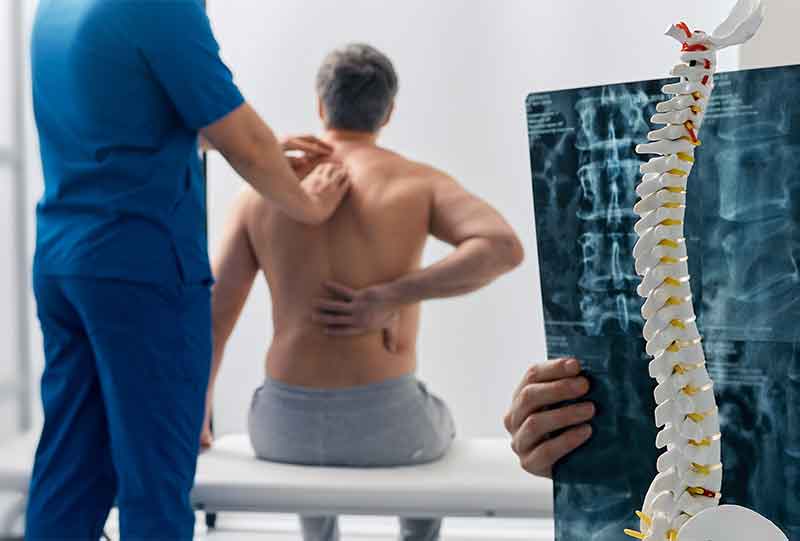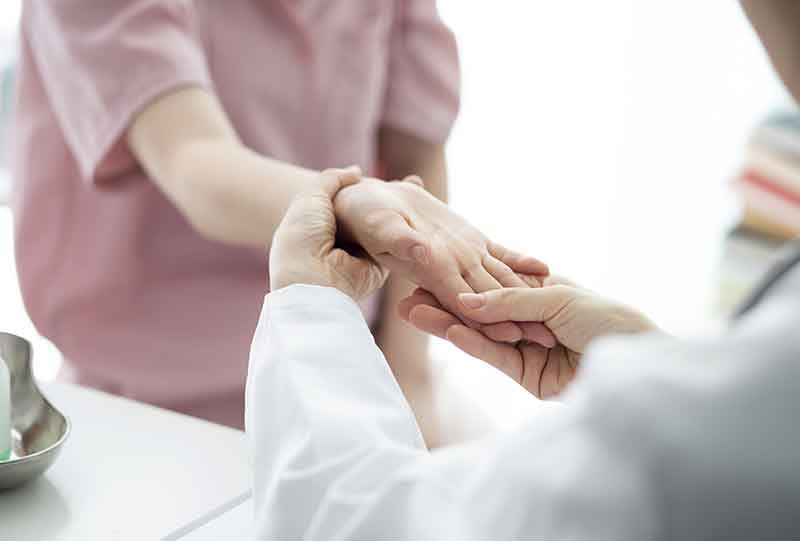Sports Injuries
Chiropractic offers a balanced approach to the treatment and the healing of sports injuries. By using the chiropractic adjustment to return spinal segments to their normal mobility and by using physical therapy to help the supportive tissues (muscles, tendons, & ligaments), chiropractic physicians help the injured areas return to normal function. Combined with some rest to help the healing process, athletes will find their way back on the court. Afterward, better strategies for exercise and stretching will be discussed with the athlete to help them stay on the straight and narrow path to better enjoyment of their chosen sport.


Slipped Discs
A herniated disc can press against a nerve that exits next to the disc. This can cause inflammation of the nerve, which can lead to pain along the path of the nerve into any area of the body, including the back, neck, and leg. Chiropractic works by addressing your pain and other symptoms.
It's a misconception that chiropractors "pop a disc back in place" using forceful adjustments. Another misconception is that chiropractic care involves a few quick treatments, which can "fix" your disc. Instead, chiropractors treat herniated discs using gentle low-force techniques. Your chiropractor will develop a treatment plan for your herniated disc, and if your symptoms do not improve with chiropractic care techniques, your chiropractor may recommend a consultation with a spine surgeon.
Tension Headaches & Migraines
Chiropractic treatment centers around the idea of manipulating the spinal column and neck to improve posture and blood flow. To treat a headache, the chiropractor will likely perform an adjustment with his or her hands, but may also use trigger point therapy, massage and other supporting types of treatments to create a holistic approach to the problem. The chiropractor will also likely recommend some stretching exercises and basic changes in posture to help keep things balanced in between visits.


Sciatica
Sciatica is most commonly a result of a misaligned lower spine that is pinching the root of the sciatic nerve. This subluxation can apply a good deal of pressure on the sciatic nerve and cause severe pain. A faulty pelvic alignment could put the gluteal muscles under duress and the sciatic nerve will be pinched as it passes through the buttocks. A slipped or herniated disc is another cause of sciatica and is usually a result of trauma from a fall or accident. Less commonly noted causes would include arthritis, tumors, diabetes, vitamin deficiencies, and any degeneration as a result from long-term stress on the lower back. Often traumatic events are not the cause of sciatica. Standing, sitting, walking, running, heavy lifting, bending, twisting, or even sneezing can bring on symptoms.
A chiropractor can help find the source of the nerve blockage and use manual adjustments to correct the spinal misalignment. The adjustments are designed to remove the blockage that is pinching the sciatic nerve and causing the pain. Ultrasound and ice therapies are also used to relieve the symptoms of sciatica. Pain medications merely mask the symptoms and never heal the cause, and surgery should always be the last resort. In most cases of patients who have received spinal manipulations, x-rays taken after sciatica treatment have shown improvement in the spinal alignment as well as a reduction of symptoms. Chiropractic care works, so contact a specialist today if you experience any of the symptoms of sciatica.
Stress Whiplash
Simple cases of whiplash are the result of strain or sprained or dysfunction of ligaments in the neck. The muscles of the neck naturally spasm as a protective mechanism after an injury has occurred. This in turn can cause spinal misalignment which can irritate nerves reducing the body’s ability to heal itself.
Over time the neck area becomes weaker, subject to re-injury and increase symptoms. If not properly treated, scar tissue can form which is weaker then the soft tissue in the area. This in turn can reduce motion and is more sensitive to pain and stress and harder to treat.
Pain, spasm, muscle weakness, or abnormal sensation (such as “pins and needles”) type of symptoms from a whiplash injury are common. Other symptoms of whiplash may be a stiff and/or painful neck, upper back, shoulder(s) area or even headaches. Chiropractic treatment, muscle work, physical therapy, pain medication and a soft neck collar can provide initial neck pain relief for the simple case of whiplash injury.


Pinched Nerves
Spinal adjustments concentrate on reducing the compression in the area where the nerve is “pinched” by repositioning bones and this also helps to loosen tight muscles. It can also help to reduce inflammation and corresponding pain, as well as restoring proper body functioning.
Carpal Tunnel Syndrome (CTS)
CTS is commonly treated by chiropractors. The methods most chiropractors use to treat CTS include manipulation of the wrist, elbow, and upper spine, ultrasound therapy, and wrist supports. We can also give you specific exercises to stretch and/or strengthen muscles of the forearm and hand.


Neck Pain
Our chiropractors may use a combination of spinal manipulation, manual therapy, and other techniques as part of your treatment plan for neck pain. Below are some spinal manipulation techniques your chiropractor may use.
- • Flexion-distraction technique
- • Instrument-assisted manipulation
- • Specific spinal manipulation
Your chiropractor may also use manual therapies to treat your neck pain.
- • Instrument-assisted soft tissue therapy
- • Manual joint stretching and resistance techniques
- • Trigger point therapy
- • Flexion-distraction technique
Other therapies may also be used to ease neck pain symptoms.
- • Inferential electrical stimulation
- • Ultrasound
Pregnancy
During pregnancy, there are several physiological and endocrinological changes that occur in preparation for creating the environment for the developing baby. These changes could result in a misaligned spine or joints.
Establishing pelvic balance and alignment is another reason to obtain chiropractic care during pregnancy. When the pelvis is misaligned it may reduce the amount of room available for the developing baby. This restriction is called intrauterine constraint. A misaligned pelvis may also make it difficult for the baby to get into the best possible position for delivery. This can affect the mother's ability to have a natural, non-invasive birth. Keeping the spine aligned helps the entire body work more effectively.


PMS
Premenstrual syndrome is a syndrome that occurs in many women from 2 to 10 days before the onset of menstruation. It is characterized by symptoms such as: mood swings, swollen abdomen, headaches, back pain, food cravings, fatigue, irritability and/or depression.
When a spinal misalignment occurs, it tends to compress the nerves that exit from that particular area of the spine, affecting the organs and systems that those nerves control. When those nerves can’t function properly, there are usually consequences for the part of the body under the control of those nerves. There have been numerous studies that have been conducted to determine the impact of chiropractic care on PMS symptoms. Many women experience fewer headaches, cramps, bloating, fatigue, etc. after being adjusted by a chiropractor. Adding proper nutrition / supplementation can make a positive difference as well, in helping to balance the body to reduce symptoms, as well as gentle stretches and exercises.
Scoliosis
Scoliosis is a sideways curve of the spine that causes stiffness and pain. It is called an idiopathic disease because the cause of it is unknown. Scoliosis is more common in females and begins in childhood. However, merely 2 percent of the population is afflicted. If it is detected early, scoliosis treatment will prevent it from worsening over time.
Chiropractic care can help improve this condition. Your chiropractor looks at your overall health examining your spine as well as other factors of your lifestyle. To help identify the problem’s cause, your chiropractor will discuss symptoms and previous injuries, your family's health history, and recreational and work-related activities. Palpation, orthopedic, and neurological tests will be performed as well as x-rays to determine the extent.


Arthritis Relief
While there is no cure for arthritis, people who suffer from arthritis – in particular osteoarthritis or Degenerative Joint Disease (DJD) – often possess joints that are subluxated or “locked up” due to cartilage breakdown. The resulting pain occurs when the exposed joint irritates the joint nerves. These irritated nerves may prevent a person from healing in an effective manner.
Specific chiropractic techniques can help relieve pain from arthritis by safely correcting the “locked up” or subluxated joints. Also, these regular adjustments can help keep arthritic individuals more mobile and in turn, these manipulations can reduce potential stresses that can cause further discomfort.
